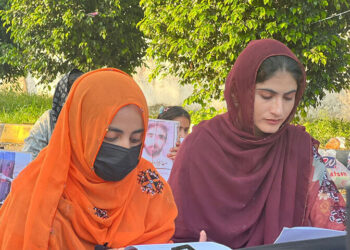ISLAMABAD; The Population Council, in partnership with the United Nations Population Fund (UNFPA), convened a meeting of the Media Coalition on Population under the theme “Seizing the Moment – New Developments in the SRH Landscape in Pakistan: The Catalyst Role of Media.” The session brought together senior journalists, religious scholars, and medical experts to explore how the media can accelerate progress on family planning and reproductive health.
Opening the discussion, Ikram ul Ahad, Deputy Manager Communication, Population Council, outlined recent policy milestones in population management: the Council of Islamic Ideology’s (CII) joint declaration on the permissibility of birth spacing in Islam, the Prime Minister’s formation of a high-level committee on population, the removal of sales tax on contraceptives, and the National Assembly’s resolution declaring population growth a national challenge. “We are at a defining moment where political leadership, religious consensus, and fiscal support are aligning. The media must now amplify these voices and translate these breakthroughs into public awareness and accountability,” he said.
From a policy perspective, Dr. Ali Mir, Senior Director at the Population Council, emphasized the importance of building on this momentum while addressing persistent gaps. “Despite progress, sharp inequalities remain across and within provinces. True change requires confronting entrenched gender norms and social customs, alongside ensuring equitable access to health and education services. The media can play a crucial role in reshaping perceptions and driving sustained behavior change,” he said.
Representing the religious viewpoint, Allama Tahmeed Jaan Al-Azhari, Executive Director of the International Research Council for Religious Affairs (IRCRA), hailed the CII declaration as a turning point. “By affirming that birth spacing aligns with Islamic teachings and is vital for maternal and child health, the CII has provided much-needed moral clarity. Islam encourages balance, and deliberate intervals between pregnancies safeguard women’s health and strengthen families,” he stated.
Offering medical evidence, Dr. Saima Zubair, FRCOG, Information Secretary of the Society of Obstetricians & Gynecologists of Pakistan (SoGP), and Senior Vice President of the Pakistan Academy of Family Physicians (PAFP), underscored the urgency of action. She noted Pakistan’s maternal mortality rate of 180 deaths per 100,000 live births and an infant mortality rate of 64 per 1,000, with 3.8 million unintended pregnancies annually leading to unsafe abortions. “Spacing births by at least 24 months can cut neonatal mortality by half. Family planning is not only about preventing pregnancies—it is about saving lives, empowering women, and strengthening families,” she said.
Closing the meeting, Dr. Ghulam Farid Khan, Programme Analyst M&E (SRH) at UNFPA, highlighted the centrality of meeting unmet family planning needs. “This is key to reducing unintended pregnancies and unsafe abortions while protecting the dignity and health of women and families. The media must challenge taboos, correct myths, and ensure services reach every community,” he said.
Journalists from leading national outlets participated in the dialogue. The meeting concluded with consensus that the convergence of religious endorsement, political commitment, and fiscal support presents an unprecedented opportunity. By shaping narratives around balanced family size, health equity, and responsible parenting, the media can act as a watchdog, translator, and bridge—helping Pakistan move toward a healthier and more sustainable future.























